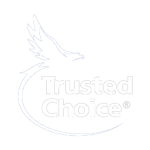Courtesy of iii.org
.jpg) Damage caused by lightning, such as fire, is covered by standard homeowners and business insurance policies. Some home and business insurance policies provide coverage for power surges that are the direct result of lightning striking a home or business. There is also coverage for lightning damage under the comprehensive portion of an auto insurance policy.
Damage caused by lightning, such as fire, is covered by standard homeowners and business insurance policies. Some home and business insurance policies provide coverage for power surges that are the direct result of lightning striking a home or business. There is also coverage for lightning damage under the comprehensive portion of an auto insurance policy.
With the explosion in the number and value of consumer electronics in homes, such as flat screen TVs, home entertainment centers, multiple computers, gaming systems as well as new smart home technology, it is more important than ever to take precautions.
Preventing Losses
The I.I.I. offers the following tips to protect homes and businesses against power surges and lightning strikes:
1. Install a lightning protection system. A lightning protection system supplies structural protection by providing a specified path on which lightning can travel. When a building is equipped with a lightning protection system, the destructive power of the lightning strike is directed safely into the ground, leaving the structure and its contents undamaged. A lightning protection system includes a “rooftop network” of lightning rods or air terminals at the top of the house connected by a series of down conductors to carry the current down to a grounding network (grounding rods or ground plates, depending upon soil conditions). Lightning protection is not a “do-it-yourself” project, so make sure you contract with a UL-listed lightning protection specialist to install the system in accordance with national Safety Standards. Homeowners may be at an increased risk if they have a Corrugated Stainless Steel tubing (CSST) product in their home and should bring this to the attention of the lightning specialist.
2. Use surge protectors. Today’s sensitive electronic equipment is particularly vulnerable to lightning. To assure the highest level of protection, a UL-listed surge protection device (SPD) should be installed on electrical service panels. Most electric utilities will rent or sell a surge device for the electric meter to “clamp down” on incoming surges. A licensed electrician can also be engaged to put similar equipment on the electrical panel. Installations typically include SPDs for the main electric panel, as well as incoming phone, cable, satellite and data lines. SPDs protect against damaging electrical surges that can enter a structure via power transmission lines. By filtering and dissipating the harmful surges, SPDs prevent electrical fires and protect against electrical discharges that can damage a building’s electrical system, computers, appliances and other systems. UL-listed transient voltage surge suppressors can also be installed to protect high-valued, sensitive electronic equipment like computers, TVs, corded telephones, microwave ovens, washing machines, refrigerators, garage door operators, irrigation system controllers, etc. Keep in mind that power strips offer little protection from electrical power surges.
3. Unplug expensive electronic equipment. As an added precaution, unplug expensive electronic equipment such as TVs, computers and the like if you know a storm is approaching.
Do’s and Don’ts for Lightning Safety
1. When Thunder Roars…GO INDOORS! Take shelter in a home, large building or substantial fully enclosed building, preferably protected with a lightning protection system. Hard topped-vehicles are generally safe shelters, as well.
2. Avoid areas where you will be the highest object. If you are caught in an open field with no nearby shelter, and your hair begins to stand on end (an indication that lightning is about to strike) drop down and crouch with hands on knees, rocking up on the balls of your feet. (The idea is to make as little contact with the ground as possible.) Never lie down flat or place your hands on the ground.
3. Certain locations are extremely hazardous during thunderstorms. Avoid lakes, beaches or open water, fishing from a boat or dock, riding on golf carts, farm equipment, motor cycles or bicycles. Take shelter in tunnels, subways, even ditches or caves if necessarybut never under a tree!
4. If caught on high ground or in an open area, seek shelter in a low area and stay away from trees. A small grove of bushes or shrubs is preferable to lone trees.
5. To avoid side flashes (voltage from a nearby struck object) stay clear of fences or isolated trees. Keep away from telephone poles, power lines, pipelines or other electrically conductive objects.
6. Stay off the telephone! In your home, don’t stand near open windows, doorways or metal piping. Stay away from the TV, plumbing, sinks, tubs, radiators and stoves. Avoid contact with small electric appliances such as radios, toasters and hairdryers.



